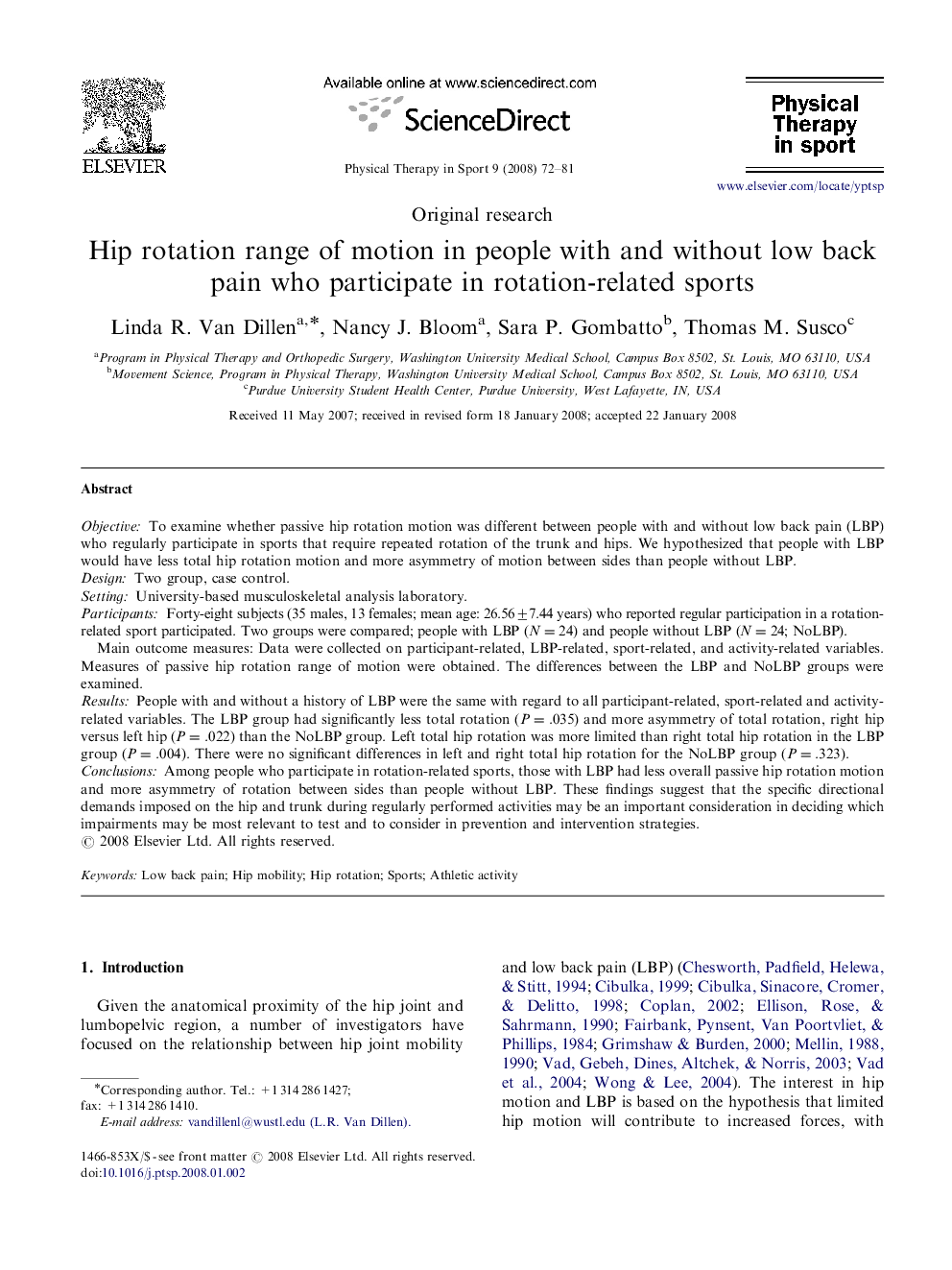| کد مقاله | کد نشریه | سال انتشار | مقاله انگلیسی | نسخه تمام متن |
|---|---|---|---|---|
| 2706089 | 1144795 | 2008 | 10 صفحه PDF | دانلود رایگان |

ObjectiveTo examine whether passive hip rotation motion was different between people with and without low back pain (LBP) who regularly participate in sports that require repeated rotation of the trunk and hips. We hypothesized that people with LBP would have less total hip rotation motion and more asymmetry of motion between sides than people without LBP.DesignTwo group, case control.SettingUniversity-based musculoskeletal analysis laboratory.ParticipantsForty-eight subjects (35 males, 13 females; mean age: 26.56±7.44 years) who reported regular participation in a rotation-related sport participated. Two groups were compared; people with LBP (N=24) and people without LBP (N=24; NoLBP).Main outcome measures: Data were collected on participant-related, LBP-related, sport-related, and activity-related variables. Measures of passive hip rotation range of motion were obtained. The differences between the LBP and NoLBP groups were examined.ResultsPeople with and without a history of LBP were the same with regard to all participant-related, sport-related and activity-related variables. The LBP group had significantly less total rotation (P=.035) and more asymmetry of total rotation, right hip versus left hip (P=.022) than the NoLBP group. Left total hip rotation was more limited than right total hip rotation in the LBP group (P=.004). There were no significant differences in left and right total hip rotation for the NoLBP group (P=.323).ConclusionsAmong people who participate in rotation-related sports, those with LBP had less overall passive hip rotation motion and more asymmetry of rotation between sides than people without LBP. These findings suggest that the specific directional demands imposed on the hip and trunk during regularly performed activities may be an important consideration in deciding which impairments may be most relevant to test and to consider in prevention and intervention strategies.
Journal: Physical Therapy in Sport - Volume 9, Issue 2, May 2008, Pages 72–81